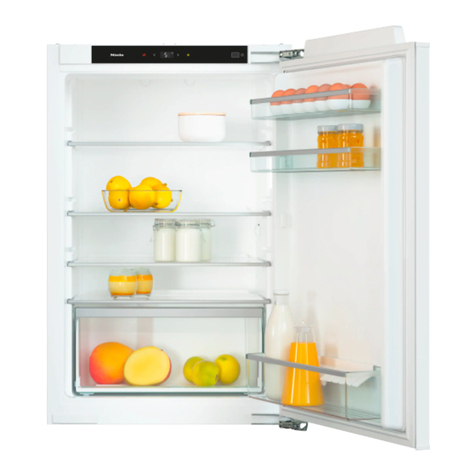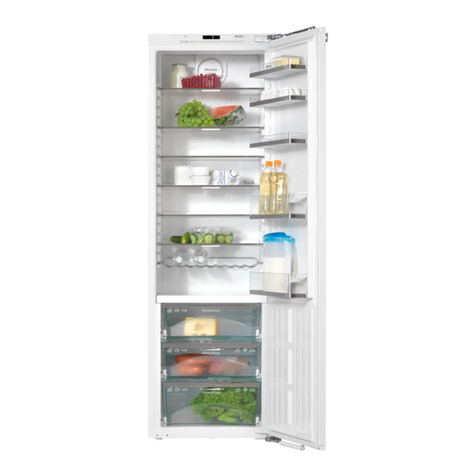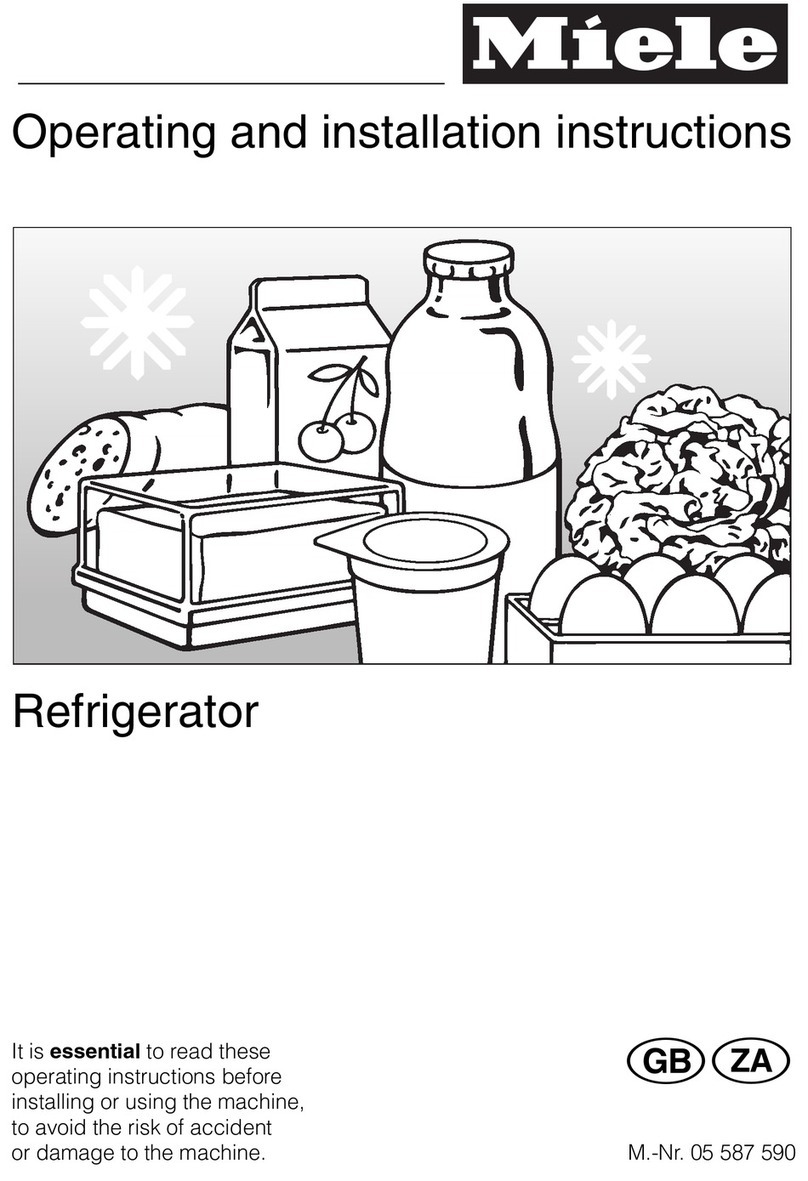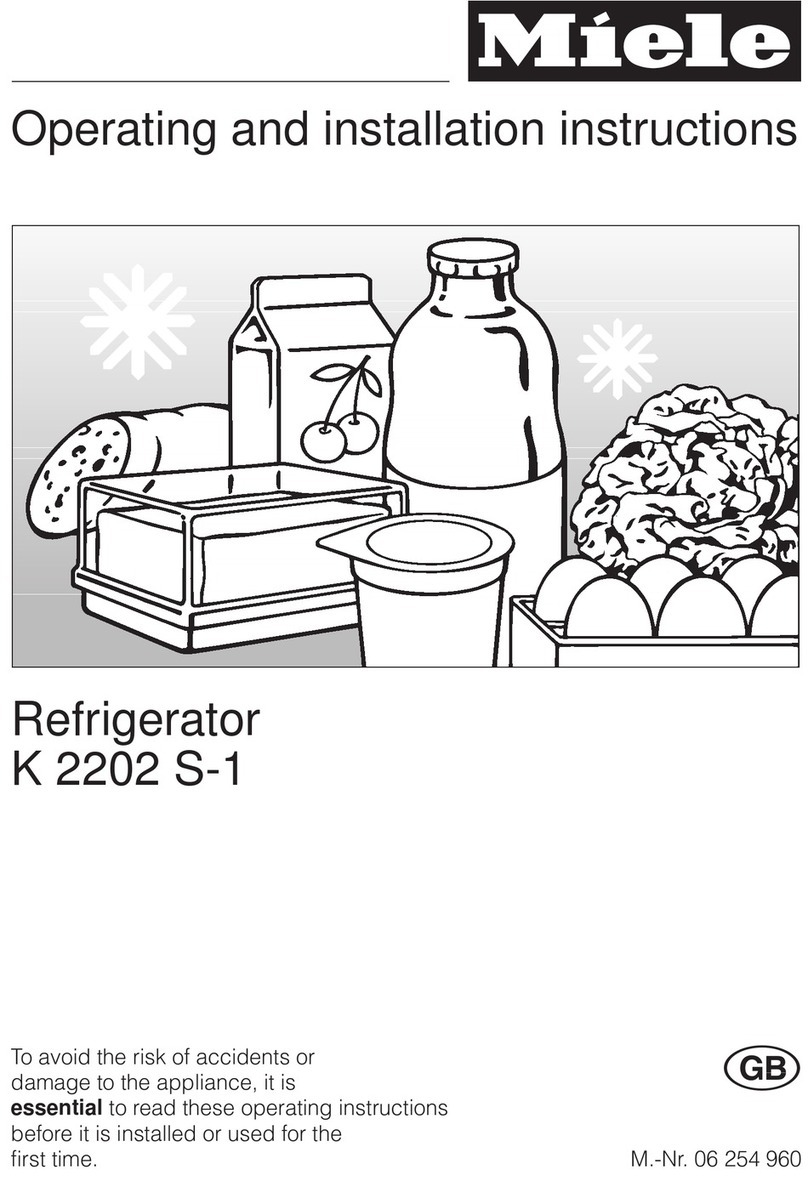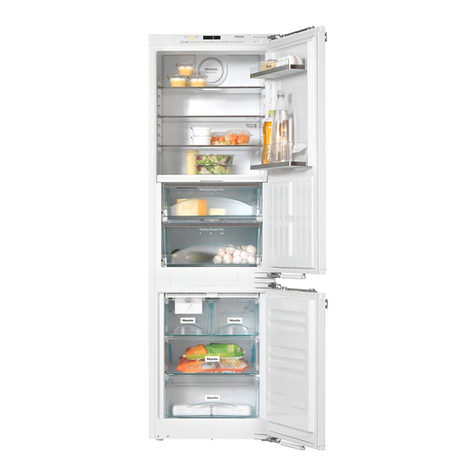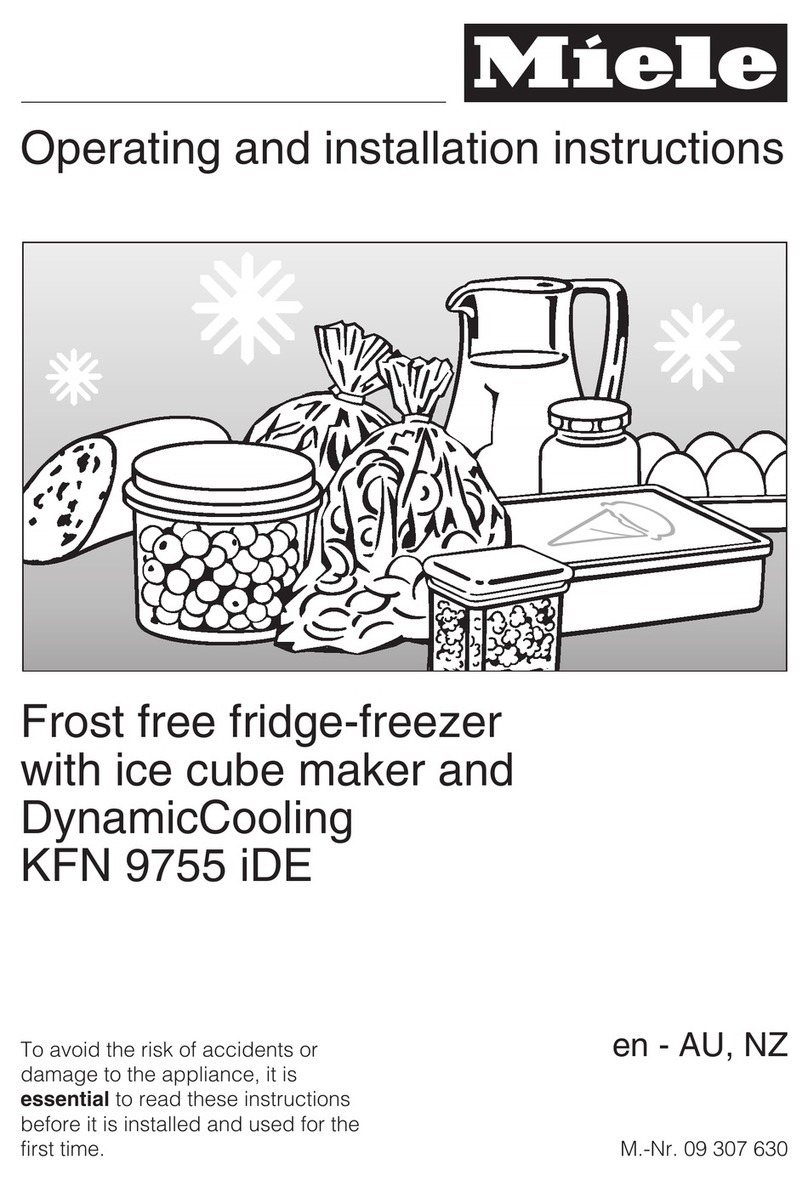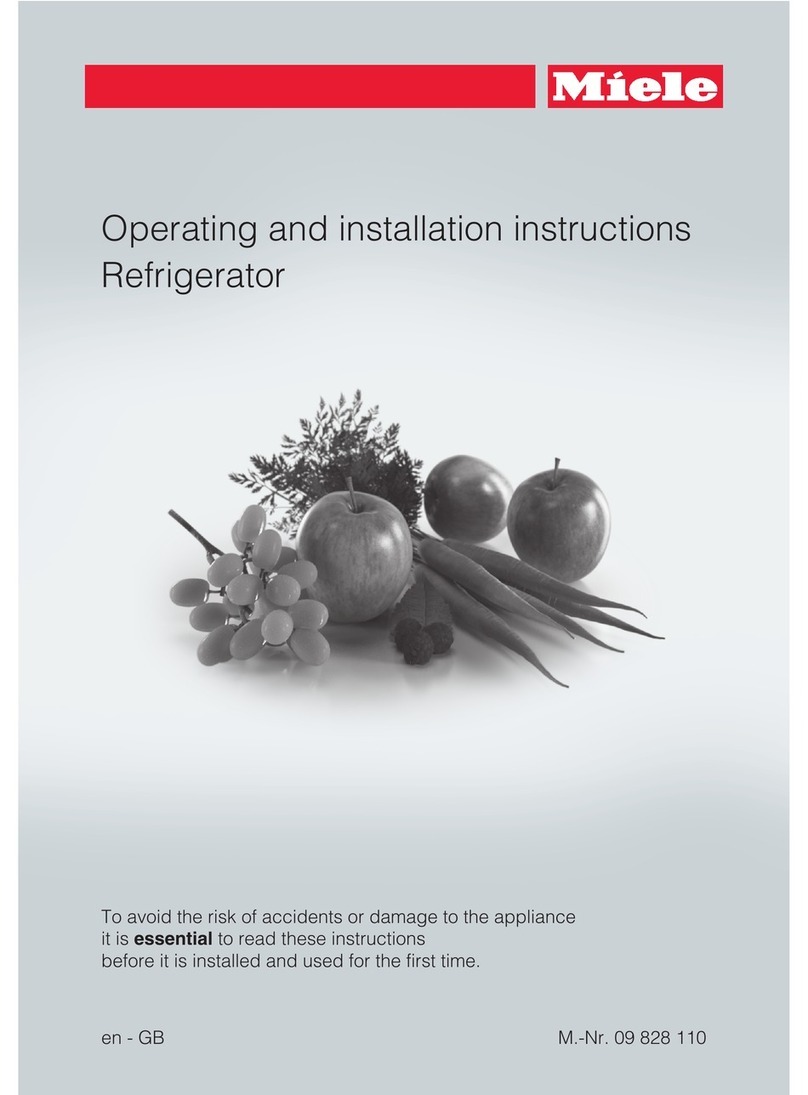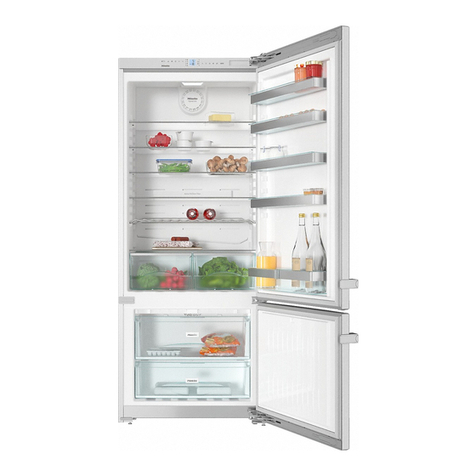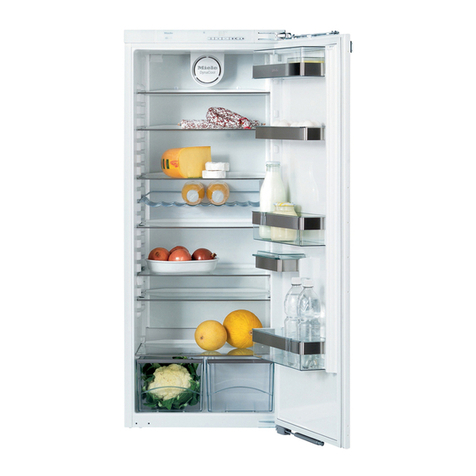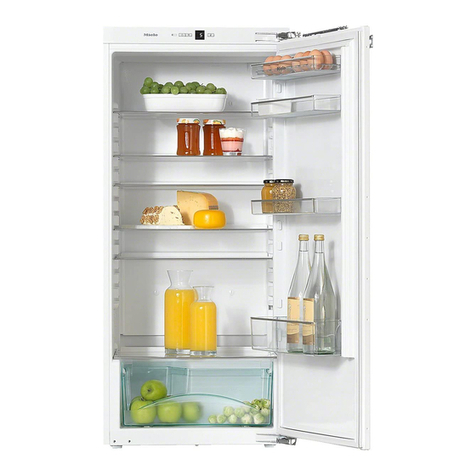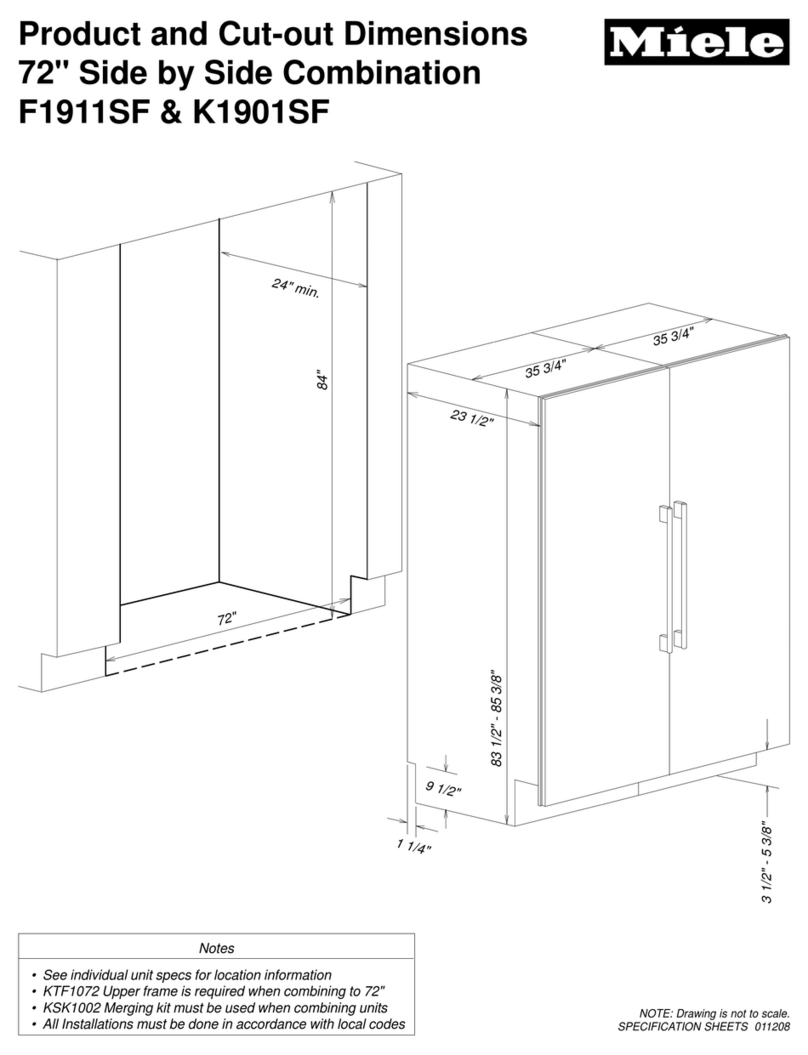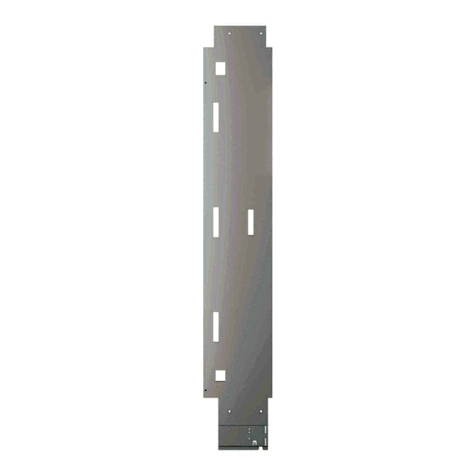This appliance complies with all rele-
vant legal safety requirements. Im-
proper use of the appliance can,
however, present a risk of both per-
sonal injury and material damage.
Before installation and before using
for the first time, read the operating
instructions carefully. They contain
important notes on safety, the opera-
tion and care of the appliance. This
way you will avoid the risk of acci-
dents and damage to the appliance.
Keep these instructions in a safe
place and pass them on to any
future user.
Correct usage
This appliance is intended for do-
mestic use only for the cool stor-
age of food and drink.
Any other usage is not supported by
the manufacturer and could be danger-
ous. The manufacturer cannot be held
liable for damage caused by improper
use of the appliance.
Technical safety
This appliance contains the coolant
Isobutane (R600a), a natural gas
which is very environment friendly. Al-
though it is flammable, it does not dam-
age the ozone layer and does not in-
crease the green house effect. The use
of this environment friendly coolant has
however led to a slight increase in the
noise level of the appliance.
In addition to the noise of the compres-
sor you might be able to hear the cool-
ant flowing around the system. This is
unavoidable, but does not have any ad-
verse effect on the performance of the
appliance.
Care must be taken during transporta-
tion and setting up of the appliance that
no parts of the cooling system are dam-
aged. Leaking coolant can damage the
eyes.
In the event of any damage:
– avoid open fires
and anything which creates a spark,
– disconnect from the mains,
– air the room in which the appliance is
located for several minutes and
– contact the Service Department
for advice.
The more refrigerant there is in an
appliance the larger the room it
should be installed in. In the event of a
leakage, if the appliance is in a small
room, there is the danger of combusti-
ble gases building up.
For every 8 g of coolant at least 1 m3
room space is required. The amount of
coolant in the appliance is stated on the
data plate inside the appliance.
Before connecting the appliance to
the mains supply, make sure that
the rating on the data plate corre-
sponds to the voltage and frequency of
the household supply.
This data must correspond in order to
avoid risk of damage to the appliance.
If in any doubt, consult a qualified elec-
trician.
Warning and safety instructions
6
